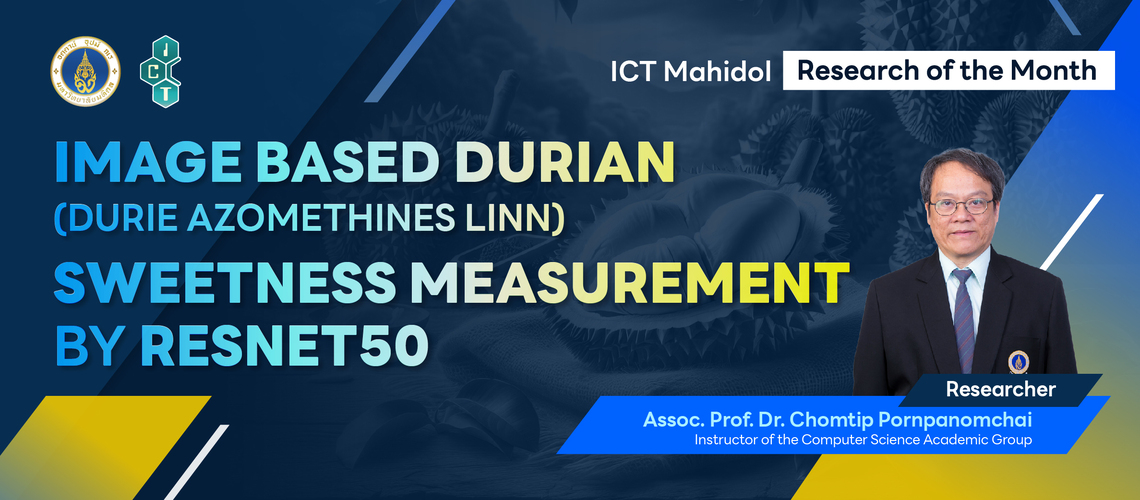In modern agriculture, the application of Artificial Intelligence (AI) is generating significant positive impacts, such as enhancing production efficiency and improving product quality control. Recognizing this potential, Assoc. Prof. Dr. Chomtip Pornpanomchai, Instructor of the Computer Science Academic Group at the Faculty of Information and Communication Technology at Mahidol University (ICT Mahidol) has focused his research on how AI can enhance agricultural management. One notable project involves measuring the “sweetness” of durian to offer consumers a more tangible and enjoyable taste experience.

The research titled “Image-Based Durian (Durio zibethinus Linn) Sweetness Measurement Using ResNet50” by Assoc. Prof. Dr. Chomtip Pornpanomchai focuses on evaluating the sweetness of the Monthong durian variety. The goal was to enable computers to assess a fruit’s flavor. Previously, Assoc. Prof. Dr. Chomtip studied fruit flavor profiles, selecting economic crops like Thai tangerines, apples, and bananas. Juice from these fruits was extracted, and sweetness was measured using a refractometer. With durian, he inferred that greater sweetness correlates with better taste.
The study involved capturing a 360-degree pictures of each durian pulp using a smartphone camera. The video footage was converted to individual frames and then analyzed with a refractometer to match each image’s color and associated sweetness level. Assoc. Prof. Dr. Chomtip utilized ResNet50, a Deep Convolutional Neural Network (CNN), to analyze image data, teaching the computer to recognize RGB color patterns in relation to sweetness levels. This model achieved an impressive accuracy rate of 90%.
Sweetness measurements were taken using a refractometer, where higher °Brix values indicate greater sweetness. For example, Thai tangerines measure about 10-18 °Brix, while the durians in this study showed values between 20-30 °Brix.
Challenges in Research
During this study, Assoc. Prof. Dr. Chomtip highlighted two main challenges: the high cost of research materials, specifically Monthong durians, and the difficulty in extracting durian juice solely for refractometer measurements. Four Monthong durians were divided into 17 pulps for imaging purposes.
Looking ahead, Assoc. Prof. Dr. Chomtip aims to make this technology accessible for farmers by minimizing costs and ensuring that essential equipment, such as a camera and laptop, remains user-friendly. Future research could extend this model to high-value local fruits, including Monthong durian, Cavendish bananas, and Nam Dok Mai mangoes.
For more details, download the published paper “Image-Based Durian (Durio zibethinus Linn) Sweetness Measurement Using ResNet50”
>>> https://ph01.tci-thaijo.org/index.php/easr/article/view/254034

